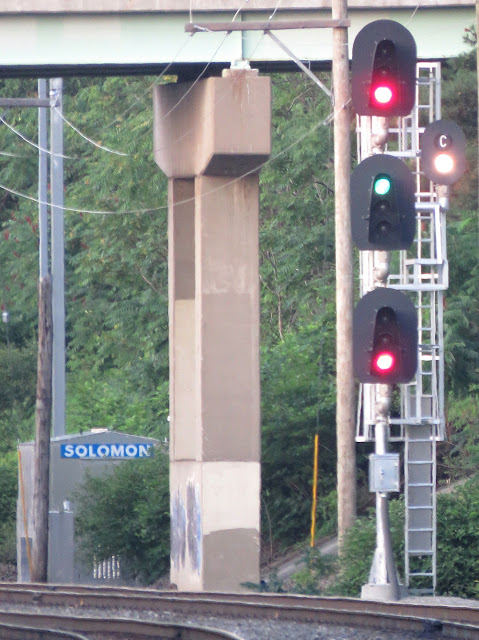A couple years ago the folks at the Railroad Media Archive Youtube Channel posted a video covering the last months of Conrail's MARION (formerly AC) tower in Marion, OH. Originally built by the Erie Railroad in 1902 and located at the parallel crossing of the CSX Toledo Sub and NS Sandusky Branch with the Conrail Indianapolis Line, the video shows off the tower's GRS/Taylor Model 2 interlocking machine with its proto-pistol grip type levers. At the time, MARION's operator only had control of the local interlocking, which seemed reasonable considering that they had to deal with train movements on separate railroads. However a new video from Railroad Media Archive shows a whole other side to operations at MARION. Sometime after the closure of the Eire main line around 1978, MARION gained CTC control of the Indianapolis Line between Belelfonte and Galleon (CP-BURT) with a 80's "Traffic Master"-style CTC panel and interface situated behind the operator's desk controlled by a compact interface of action keys and a numeric keypad.
In the posted video full attention is given to this CTC panel, with MARION's legendary lever frame barely making an appearance. We watch freight trains slowly cross MATION's territory while the operator discusses his duties and lines routes while text annotations appear in the video's side bars. It is mentioned that the tower would be losing its CTC territory by the end of the year (1989).
The video captures that fleeting period between classic towers and train order offices, and modern point and click computer dispatch interfaces. By the time MARION was fully closed in 1995, all traces of its 1980's CTC territory had been removed.











